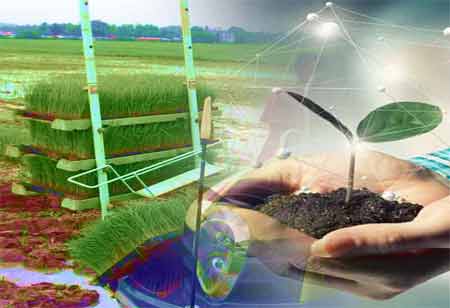Thank you for Subscribing to Agri Business Review Weekly Brief
The Growing Influence of Grow Lights Market on Optimal Plant Growth
The grow lights market has seen remarkable growth over the past decade, driven by the rising trend of indoor horticulture.

By
Agri Business Review | Friday, August 04, 2023
Stay ahead of the industry with exclusive feature stories on the top companies, expert insights and the latest news delivered straight to your inbox. Subscribe today.
The grow lights market is revolutionizing indoor horticulture, providing optimal plant growth through advanced lighting solutions and expanding its influence in the industry.
FREMONT, CA: The grow lights market has seen remarkable growth over the past decade, driven by the rising trend of indoor horticulture. As urbanisation and limited outdoor spaces become more common, people are turning to indoor gardening to enjoy the benefits of growing plants in their homes. Grow lights, also known as plant lights or horticultural lighting, play a critical role in this rapidly growing industry. These artificial lighting systems replicate sunlight, allowing plants to thrive in indoor environments and achieve optimal growth.
The Rise of Indoor Horticulture
The shift towards urban living and the shrinking of outdoor spaces has led to a growing interest in indoor horticulture. Apartment dwellers, city residents, and gardening enthusiasts with limited access to outdoor gardens have found indoor gardening to be a viable solution. Grow lights have emerged as a key enabler, providing the necessary light spectrum to support photosynthesis and stimulate plant growth.
Technology Advancements in Grow Lights
The grow lights market has seen significant technological advancements, offering a wide range of lighting options to suit various plant types and growth stages. Light-emitting diodes (LEDs) have revolutionized the industry with their energy efficiency, longevity, and ability to emit specific wavelengths tailored to plant needs. LED grow lights have become the go-to choice for indoor horticulture due to their lower power consumption, reduced heat output, and flexibility in design.
Types of Grow Lights
LED Grow Lights: LED grow lights dominate the market due to their numerous advantages. They are customised to emit specific wavelengths, which optimise plant photosynthesis and enhance growth efficiency.
High-Intensity Discharge (HID) Lights: HID grows lights, including Metal Halide (MH) and High-Pressure Sodium (HPS) lights, have been widely used in the past. However, their energy inefficiency and excessive heat generation have led to a gradual decline in their popularity.
Fluorescent Lights: Compact Fluorescent Lights (CFLs) and T5 grow lights are still utilized for small-scale indoor gardening projects or for starting seedlings. Though cost-effective, they may not be as efficient as LED grow lights for larger, long-term indoor gardens.
Applications of Grow Lights
Commercial Horticulture: The use of grow lights has revolutionised commercial horticulture by enabling year-round cultivation in controlled environments. Vertical farms, greenhouse facilities, and indoor hydroponic setups have proliferated due to the effectiveness of artificial lighting systems.
Home Gardening: Indoor gardening has become a popular hobby among urban dwellers. Grow lights allow homeowners to grow a wide variety of plants, including herbs, vegetables, and ornamental flowers, regardless of the outdoor climate.
Research and Experiments: Grow lights play a vital role in research and experimentation, enabling scientists and horticulturists to study plant behaviour, optimise growth conditions, and develop new agricultural techniques.
The grow lights market has transformed into a pivotal element of indoor horticulture, revolutionizing plant cultivation and crop production methods. With ongoing technological advancements and a growing consciousness regarding sustainable agriculture, the market anticipates consistent expansion. As both individual consumers and commercial cultivators increasingly adopt indoor gardening practices, the need for efficient and environmentally friendly grow lights is projected to persistently increase.





